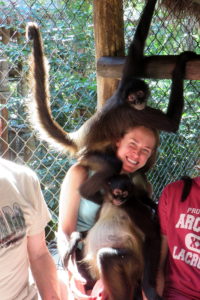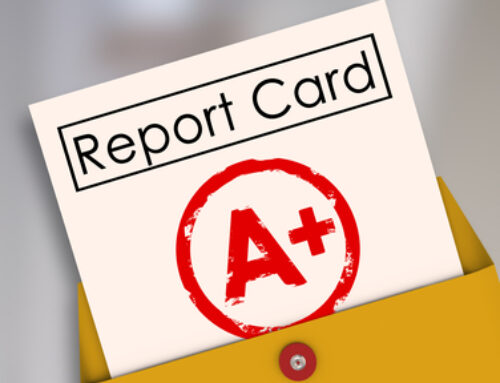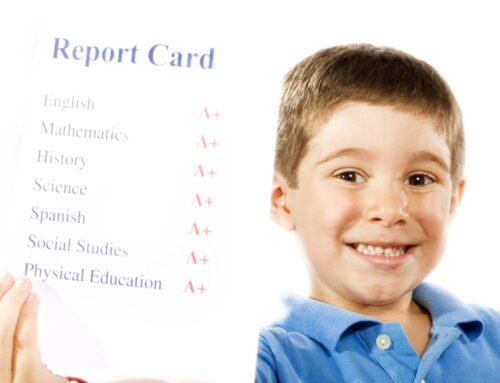Over winter break, my family took a vacation to Mexico. During our time there, we visited a spider monkey sanctuary called The Jungle Place, which provides “food, shelter, access to medical care and a lot of love to rescued Spider Monkeys who were victims of the illegal pet trade, poaching, and habitat destruction and have nowhere else to go.” (www.thejungleplace.com)
In addition to serving as a sanctuary for monkeys, The Jungle Place provides a unique opportunity for humans by allowing them to visit the facility and interact with the monkeys. This was what my family and I did, and it was truly a remarkable experience.
Following an orientation, we entered one of the monkeys’ enclosures. We had been told to sit on the floor with our legs straight out in front of us and our hands open so that the monkeys could see there was nothing in them. (If your hands are closed, the monkeys will think you have food in them and will pry them open.) Over the next hour, we basically served as a human jungle gym for the monkeys, as they jumped, climbed, and sat on us. As one of sanctuary’s owners said, we were the monkeys’ entertainment for the morning.
During our visit to The Jungle Place, it became evident that the monkeys there spend a great deal of their time playing. Because they live in captivity, they don’t have to worry about finding food or avoiding predators. They simply get to have fun.
Play and fun are two things that I often feel are missing from my students’ lives. Today’s teens are so busy that they rarely have time to just relax and enjoy life. When they’re not in school or doing homework, they are playing sports, participating in activities, and/or working. They’re exploring and figuring out what they like to do, while at the same time building their resumes in order to get into college. Don’t get me wrong, school and extracurriculars are important; in fact, part of my work involves helping students choose their classes and identify activities. But play and relaxation are important, too, and from what I’ve observed, students aren’t doing enough of either.
I see an example of the lack of time students have for fun when I ask them what they like to do in their free time. Some students will say, “I really don’t have any.” I see another example when I ask if they like to read. I frequently hear responses such as, “I used to, but I don’t have time to read for pleasure because of all the reading I have to do for school,” or, “I used to, but I don’t enjoy it anymore because of everything I have to read for school.” As someone who has always loved reading, such statements make me sad.
There has been a great deal of research on the importance of play for young children. It helps them learn, fosters creativity, promotes the development of social skills, and benefits their mental and emotional health. I would argue that play also needs to have a place in the lives of adolescents for these same reasons.
I don’t claim to be a perfect role model of setting aside time to have fun. Like most people, I can get really busy and stressed out, and sometimes it’s all I can do just to finish my work in a given day or week and to get an adequate amount of sleep. (Sleep is also an area where I think teens are lacking, but that’s another topic for another time).
Yet, inspired by my experience with the monkeys, I made a New Year’s resolution to try to play and relax more. I hope I can inspire some of you to do the same. My wish for all students is that when you look back on your high school years, you will feel like you not only accomplished a lot, but you also had a lot of fun.
Now, if you’ll excuse me, I’m going to go read a book.






